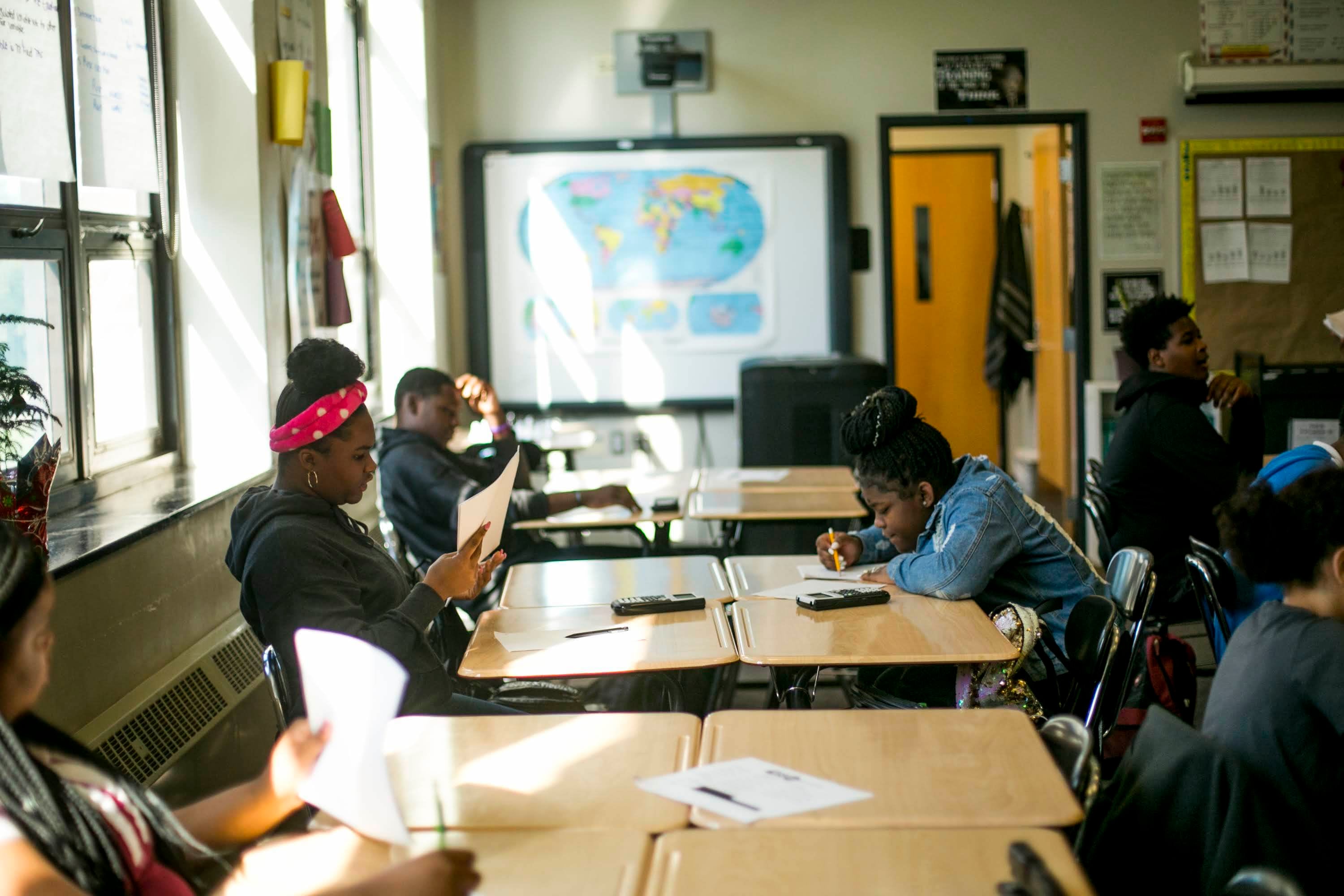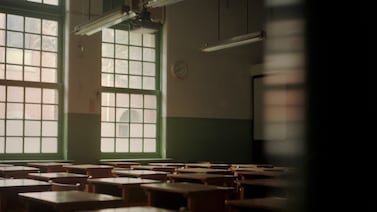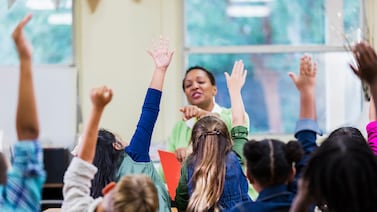The ratio of students to counselors in the nation’s public schools has reached its lowest point in at least 36 years, spurred both by an influx of new counselors and a nationwide decline in student enrollment, according to new data.
The dual trends left schools with an average of 408 students for every counselor last school year, according to the American School Counselor Association’s analysis of federal data. That’s lower than the 424 to 1 ratio pre-pandemic, but still significantly higher than the 250 to 1 recommended by the counselors group.
“While not the optimal ratio, it’s still good news,” said Jill Cook, executive director of ASCA.
Lower average caseloads can mean counselors have more time to spend with each student, fulfilling an especially important role as students struggle mentally and academically in the wake of the pandemic. But experts caution that the pattern remains uneven across states and that focusing too heavily on national or statewide statistics can obscure stark disparities between districts and the true accessibility of counselors at individual schools.
The national data comes even as efforts to hire school psychologists and counselors have stumbled across the country, with many large school districts failing to add new counselors. As of last fall, many counseling positions remained unfilled.
Still, between the 2019-20 and 2021-22 school years, the nation’s public schools saw the number of counselors jump by more than 1,200, while student populations dropped by nearly 1.4 million. Research has shown that a smaller ratio can help boost some students’ academic performance while reducing disciplinary infractions.
Cook attributed the increased number of school counselors to a heightened awareness of their importance during the pandemic and a flood of federal relief funds that helped bolster mental health support.
She pointed to several states that have made significant strides in recent years, like California and Illinois. In the past year, Illinois saw its total number of counselors increase by more than 700 — offsetting an initial loss of around 400 counselors in the first full pandemic school year.
But with relief funds set to expire in the coming years and future enrollment trends uncertain, Cook said it’s unclear whether the decreased ratios can be sustained.
“At some point the federal funding won’t be there,” Cook said. Counselors hired during the pandemic are saying, “‘Will this position still be here in three, or four, or five years?’”
Mandy Savitz-Romer, who researches school counseling at Harvard’s Graduate School of Education, cautioned against reading too much into the state and national figures.
“When we talk to the states about these caseloads, they’re frustrated by the fact that people tend to use them to make policy decisions, when they are not accurately representing student access to counselors,” she said. “That’s the key issue — having a low caseload does not mean students have access to counselors. Those counselors in a state with a low caseload could spend the majority of their time proctoring tests.”
Understanding students’ access to counselors requires looking at how much time school counselors spend engaging with students and the level of support and commitment for counseling from each school, Savitz-Romer said, among other factors.
Still, there’s some information that can be gleaned from the numbers.
“These caseloads are beginning to tell us that if a student is fighting with 600 other students for time with a counselor, they’re not going to have their needs met — and quite honestly, that’s true with 400, too,” she said. “The real question is: What are we committed to providing to our students at this moment when there is such a crisis going on? These caseloads don’t suggest that we’re really committed to addressing it.”
As the nation sees some progress on the overall ratio, for some states, the needle is moving in the opposite direction.
Between the 2019-20 and 2021-22 school years, Tennessee saw its ratio rise from 301 to 1 to 458 to 1, as the state lost more than 1,100 counselors and 18,000 students, the federal figures show. New York lost nearly 2,000 counselors as well as more than 144,000 students, raising the average number of students per counselor from 361 to 460.
Meanwhile, Indiana had the nation’s highest ratio of students to counselors at 694 to 1, after losing nearly 700 counselors during the pandemic.
A spokesperson for the Indiana Department of Education declined to comment on the loss of counselors. Spokespeople for the New York State Education Department and the Tennessee Department of Education did not respond to requests for comment by the time of publication.
Losses in those states and others may be prompted by nationwide staffing shortages, more social workers being hired by schools, budget cuts, as well as school counselors who choose to leave due to the immense pressure that comes with the position, Savitz-Romer said. School counselors are also forced to juggle additional administrative duties, adding stress when already stretched thin.
“They’re realizing that their job is impossible, and when someone’s job is impossible, it leads to higher levels of burnout,” Savitz-Romer said.
In Tennessee, Amy Baltimore, advocacy director for the Tennessee School Counselors Association, blamed a myriad of issues, including fewer students pursuing training to become a school counselor.
“But it’s also because our role is just not protected in Tennessee,” she said. “School counselors get pulled into all kinds of other roles than what aligns with their training, whether it’s truancy or master scheduling or many other needs. These are helping professionals whose general nature is to help others — they’re ‘yes’ people. But eventually they get burned out and move on to other things.”
Counselors must also act as “stewards of student trauma,” a role made exponentially more difficult amid the pandemic’s toll on student mental health, Savitz-Romer said.
“We’re seeing counselors leaving roles because their own mental health is being compromised,” she said.
That was the case for Anna Sutter, a former school counselor at a public school district in Indianapolis, Indiana.
During her five years in the field, she routinely skipped lunches, lost sleep, and worked upwards of 12-hour days. One morning, she woke up “an anxious mess” at 3:30 a.m. and immediately headed to her office to get an early start — because once the students arrived on campus, it was “crisis central.”
“The boat was sinking and on fire,” she said, adding that many of the more than 600 students in her caseload were grappling with mental health crises, fights, failing grades, pandemic losses, and more. With so many urgent concerns, students with other needs — like post-secondary guidance or raising a C to a B — had a harder time finding support, Sutter added.
“I wish I could have helped students who weren’t in crisis, but still needed me,” she said.
Marta Aldrich contributed reporting.
Julian Shen-Berro is a reporter covering national issues. Contact him at jshen-berro@chalkbeat.org.






